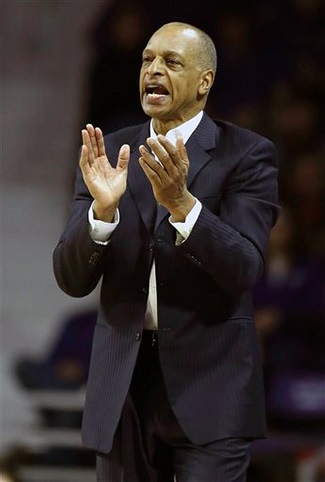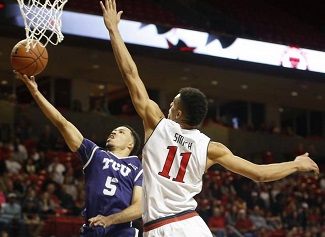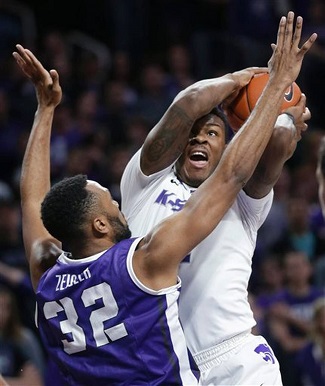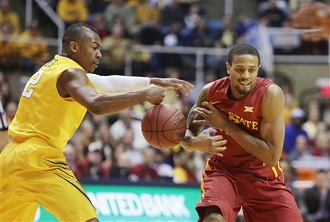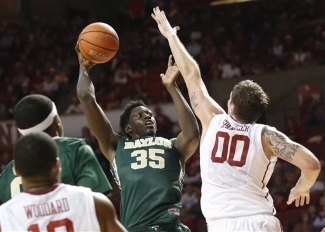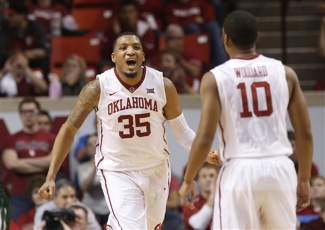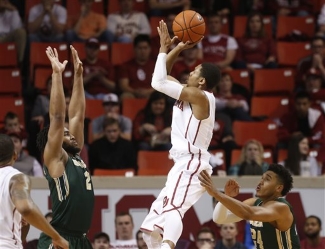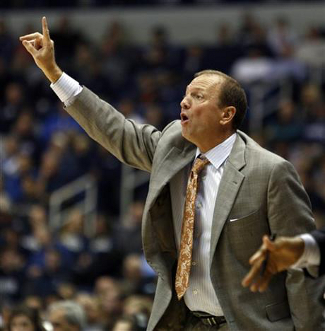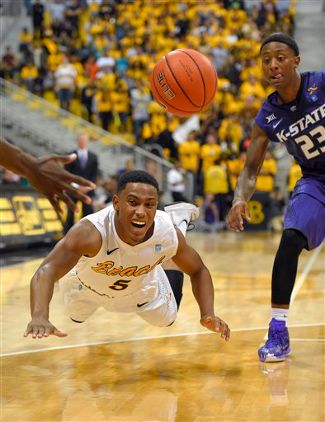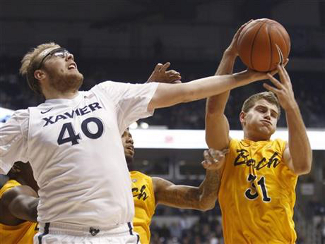Wilkerson-Greines Activity Center | Fort Worth, TX | Tip: 6 P.M. CT | TV: ESPNU Vegas: Texas -3 | KenPom: TCU, 59-58 (54%) The Texas Longhorns bounced back from a two-game losing streak in impressive fashion on Saturday night, thumping West Virginia by a 77-50 count. The win brought Texas back to level on the young Big 12 season, with tonight’s road game at TCU providing a chance to build a little momentum heading into this weekend’s clash with Kansas. Although TCU is just 1-3 in the league and has been a doormat since joining from the Mountain West, the Horned Frogs are not nearly the easy win of years past. With some solid transfers and key players finally staying healthy this season, the Horned Frogs finished a fairly soft non-conference schedule with a pristine 13-0 mark. While they haven’t found the same success in the Big 12, the Horned Frogs battled both West Virginia and Baylor in close losses at home, with the latter contest going to overtime. Texas once again looked like a legitimate contender in Saturday’s dominating win over West Virginia, but if they are going to remain relevant in the conference race, they have to follow it up with a road win tonight. Even though Ken Pomeroy’s model gives TCU the slight edge in this one, the Fort Worth road trip will likely prove to be the second-easiest in the Big 12 this year. The Longhorns cannot afford to give up ground to their competitors by dropping a winnable game away from home.
Trent Johnson finally has a healthy team in his third year By the Numbers Although the Horned Frogs only played two power-conference opponents in their non-conference slate, their adjusted defensive statistics are still very solid. They are currently ranked 13th in the nation, having allowed an adjusted .902 points per possession, according to Ken Pomeroy. Through four Big 12 games, they have the league’s third-toughest defense, having allowed an adjusted .951 points per possession in conference play. That stifling defense is anchored by a stout interior D, where the Horned Frogs have a ton of length. TCU’s big men are very patient and disciplined when protecting the rim, as they constantly keep their feet grounded and arms extended to the sky. As a result, opponents find it very difficult to score inside, and don’t usually get bailed out by foul calls. TCU’s two-point field goal defense is second-best in all of D-I, with opponents making just 34.8% of their shots inside the arc. It only takes an instant for a second and sometimes a third Horned Frog big to collapse on a ball handler in the paint, so Cameron Ridley will need to pick where he left off against West Virginia. He, Prince Ibeh, and the other Texas giants will have to react quickly when they get the ball in the low post, or they will quickly find their window of opportunity closed. While the big men tend to avoid fouling in the paint, the Horned Frogs do foul quite often when trying to stop dribble penetration, and when battling on the glass. Their defensive free-throw rate, which measures how often a team sends opponents to the line, is the 20th-highest in Division I, with TCU opponents shooting nearly one free throw for every two shots taken. Consequently, TCU opponents score nearly 30% of their points from the line, which is the highest percentage in the nation. Although TCU gives opponents frequent trips to the charity stripe, they do a great job earning their own trips to the line to balance it out. TCU’s offensive free-throw rate of 51.6 is third-highest in the country, but they fail to take advantage of the opportunities. The Horned Frogs have made just 62.3% of their free throws this season, the 18th-lowest success rate in Division I. They have shot even worse in conference play, making just 61.5% of their free throws against Big 12 opponents. The extremes demonstrated in free-throw rates are also mirrored in TCU’s rebounding numbers. The Horned Frogs are a top-ten team when it comes to winning back missed shots, while checking in near the bottom third of Division I teams on the defensive glass. TCU reclaims 41% of its own misses, but still allows opponents to snag 32.5% of their own. With the Longhorns posting strong rebounding numbers on both ends of the court, those extra possessions could big a huge factor in tonight’s game. Meet the Horned Frogs
Kyan Anderson leads TCU in scoring and assists The Horned Frogs are led by senior point guard Kyan Anderson (No. 5), who has ascended TCU’s historical scoring ranks, and now finds himself in the top ten. Although he’s made just 33.7% of his threes this season, his career rate is just shy of 36%, and his range extends well beyond the arc. On a team that doesn’t shoot a ton of threes and is fairly average in its accuracy, Anderson’s ability from behind the arc is something that opponents have to keep in mind. Typically, Anderson is slicing up defenses with the bounce, and he’s always alert enough to find open teammates when opponents take away a finish at the rim. More than three-quarters of Anderson’s assists come when he’s in the paint, and with an assist rate of 28.2%, Texas defenders off the ball will have to be aware of that fact when trying to help on his penetration. Anderson is also a fantastic defender who hardly fouls, yet forces opponents to start their offense well behind the arc. He is quick enough to stop dribble penetration, and he makes it very difficult for his man to receive passes. Anderson’s 3.1% personal steal rate is currently ranked 220th in the nation, while his 2.5 fouls per 40 minutes also ranks him 427th in Division I. Well-traveled senior Trey Zeigler (No. 32) joins Anderson in the backcourt after stints at both Central Michigan and Pitt. Zeigler loves to drive to the rack, and he will quickly spin around defenders who try to cut him off on his path to the rim. He has taken only four of his 113 shots from behind the arc this season, so Texas should give him a nice cushion and make it more difficult for him to penetrate. Zeigler also rebounds well for his position, constantly finding cracks to get past defenders and snag the offensive boards. To put his offensive rebounding numbers in perspective, Zeigler’s personal rate of 7.1% is better than Connor Lammert’s and just a hair behind that of OU’s Ryan Spangler. Coach Trent Johnson has made some quick strides in recruiting since arriving in Fort Worth, and the addition of JUCO transfer Kenrich Williams (No. 34) is another nice boost. The 6’7″ sophomore made his first start on Saturday at Texas Tech, and is averaging more than 23 minutes per game. Williams is very poised with the ball, and has shown the ability to knock down the three, having made 5-of-12 on the year. He has used that threat to shot fake opponents out of position, and then found space in the midrange to sink a jumper. He also owns one of the nation’s 50 best offensive rebounding marks, while his defensive rebounding rate is in the Top 400, and his block percentage is 249th. Sophomore forward Chris Washburn (No. 33) is another transfer for the Horned Frogs, arriving in Fort Worth by way of UTEP. The 6’8″ lefty can knock down midrange jumpers and hook shots, and does a good job stripping the ball when he helps on defense. Washburn also does a nice job blocking shots, despite looking like he could stand to shed a few pounds. In the middle, sophomore Karviar Shepherd (No. 14) is a vacuum on the glass and an intimidating presence in the lane. The Horned Frogs don’t often post up their big men, so Shepherd can often be found knocking down midrange jumpers and causing a nuisance in pick-and-pop situations. Unfortunately, he has limited his effectiveness in some games by picking up dumb fouls away from the basket. The Horned Frogs will certainly need him for extended minutes tonight, so Shepherd will have to avoid picking up cheap fouls on the boards and defending outside the lane. On the occasions where Shepherd has found himself in foul trouble, Amric Fields (No. 4) has had to step up, but the 6’9″ senior is only playing about 16 minutes per game this season. Like Shepherd, Fields can also stretch the floor, but he is not as comfortable with the bounce as Shepherd, and has had issues when teams throw doubles at him. The other post reserve is 6’8″ junior Devonta Abron (No. 23), who is in his second season with TCU after starting his career at Arkansas. Abron is not nearly as disciplined on defense as the other Horned Frog bigs, but he gobbles up rebounds on both ends of the court and is chipping in 8.5 minutes per game. Sophomore swingman Brandon Parrish (No. 11) came off the bench in Saturday’s win at Texas Tech, after starting the team’s first 16 games. He is not a strong ball handler, but is a deadly shooter from beyond the arc in catch-and-shoot situations. Parrish’s 41.9% success rate from three is the team’s best, but he’s averaging less than one make per game. On defense, Parrish has had difficulty keeping quick guards in front of him. Another three-point threat for the Horned Frogs is sophomore Hudson Price (No. 21), the son of former NBA star Mark Price. Although he came in with a reputation as an outside scorer, he’s made just 32% of his threes in college, and has not found much success putting the ball on the floor when opponents chase him off the line. The final member of TCU’s core rotation is freshman guard Chauncey Collins (No. 1), who is playing about 10 minutes per game. The 6-footer is very quick with the ball on offense, but that speed has not yet translated to good defense. Collins often lets his man get the corner, and he logs quite a few fouls as he struggles to keep opposing guards from penetrating. On the other end, the freshman has taken 75% of his shots from behind the arc, but connected on just 30% of those attempts. At that rate, the Longhorns can probably afford to give him some space to neutralize his speed. Keys to the Game
TCU’s defense does not give opponents much space 1. Attack with the bounce – The Horned Frogs do a fantastic job defending against typical post-up opportunities, and foul often when opponents put the ball on the floor. The Longhorns can earn themselves quite a few trips to the line if they are aggressive with the ball, and can also open things up a bit for the big men inside by drawing defensive attention with their penetration. 2. Force long jumpers – While the Longhorns should be trying to create things with the bounce, they will also want to take away that aspect of the game for TCU. The Horned Frogs thrive on dribble penetration to create open looks, so Texas needs to give some space on the perimeter and force TCU into taking long jumpers. Although the Horned Frogs have a few guys who can knock down the three, they are not used to relying on the outside shot for much of their scoring 3. Win second-chance battle – With both teams currently among the nation’s ten best offensive rebounders, there will likely be quite a few second-chance opportunities for these teams tonight. If either squad can limit the number of those extended possessions, it will take away a huge aspect of the opposing offense’s scoring. The edge seems to go to Texas here, as the Longhorns have posted much stronger defensive rebounding numbers. However, if they can’t reproduce that success in Fort Worth tonight, the Horns may find themselves in a tight one. [Ed: This post was revised after publishing to reflect the new rankings in the January 19th polls.] |








